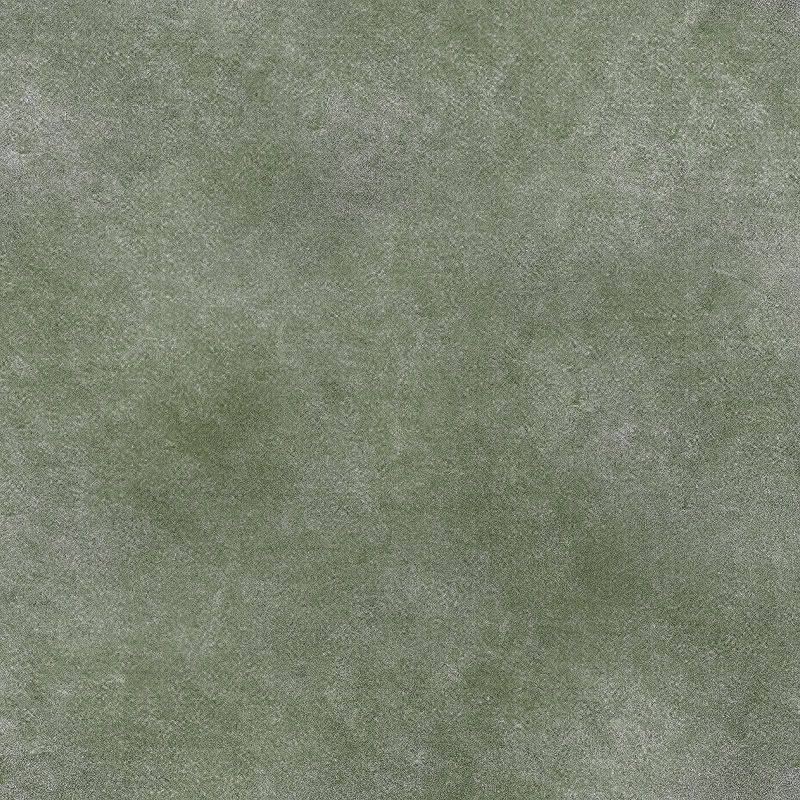Inspire's Grunge Texturing Tutorial
Found at
Inspire! Media.
***Part One: Concrete***
Note: This tutorial is aimed at people with almost no Photoshop experience at all, so even the inexperienced can learn.
You can also find this tutorial on my site under the "Tutorials" Section, located
here.
Ever wonder on how to create realistic cement-like textures, without using a digital camera? After seeing many complaints, I created the following tutorial.
Create a new image by clicking File > New. I would set the width and height to 1024 x 1024, because it's always best to start big.
Using the paint bucket tool, color the background the color of your choice. For this example, I used RGB (8D8D8D).
Add noise. This is the best way to add a light sense of wear and tear, without making it obvious. Click Filter > Noise > Add Noise. Check "Uniform" and Monochromatic, and then play with the amount of noise until you are happy. I would pick anything from around 6.0 to 25.00. For this, I chose "11.2".

Make sure you have some good, grunge brushes. It is very easy to get some, just search "Download grunge Photoshop brushes" in Google. After you download these files "they should be in the ".ABR" format), install them into Photoshop by placing them into the following folder: [Photoshop Directory]/Presets/Brushes.
Now, create a new layer by clicking Layer > New > Layer, or by pressing "Shift+Ctrl+N". Once your new layer has been created, select your new brushes by clicking the "Brushes" tab in the top right-hand corner of Photoshop, or if you have it as a palette, select that. Click the little arrow to bring down the menu, and select "Load Brushes". This will open an Explorer window in which you select the brushes of your choice. These brushes should now be available in the Brush Select Menu in the top-left corner. To switch quickly between brushes, you can choose brushes that you have already loaded at the bottom of the Brushes tab.
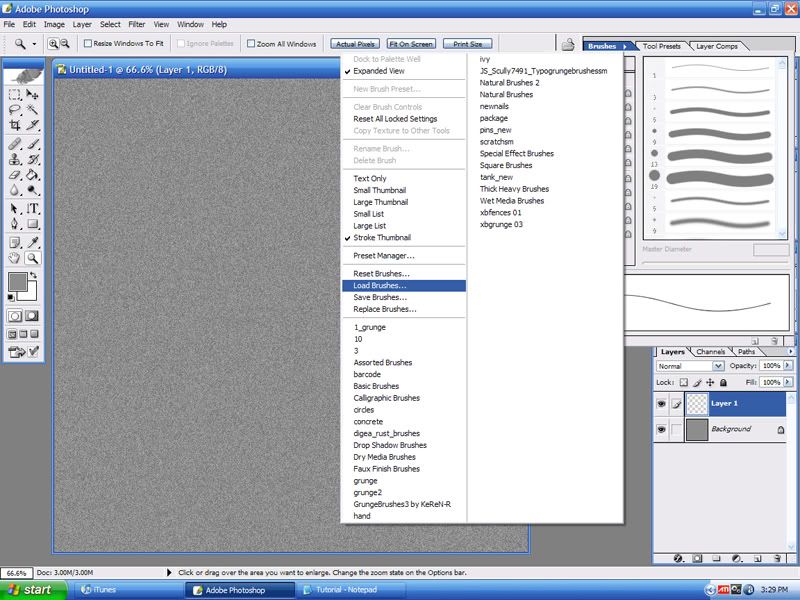
After selecting your brush of choice (I would choose a large, cloud-like dirt brush), change your colors to white and black, if they aren't already. Select your new layer and cover it entirely with this brush, like in the screenshot below. Make sure your brush is fairly large enough to do this by adjusting it's diameter in the Brush Select Menu.
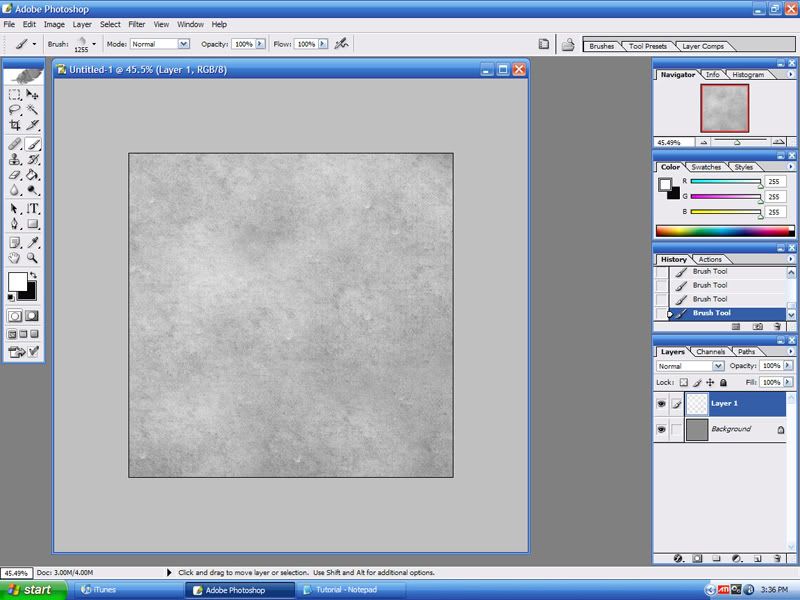
Create another new layer, and do the same, except with black. This will probably look pretty bad at this point, but don't worry, it isn't finished. Repeat this process again with different colors, maybe a dark green or a rusty orange. I used dark green in this example. This is what mine looked like after three layers and three different colors:
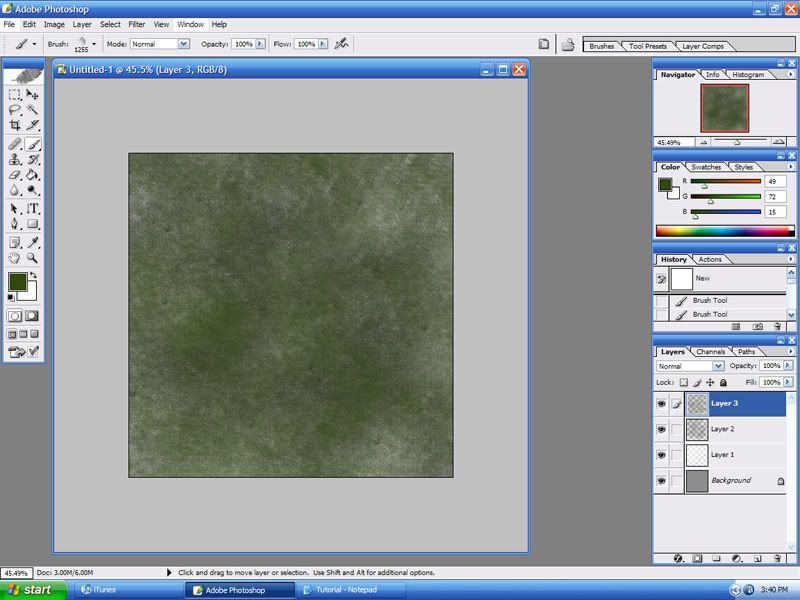
Adjust the opacity of each layer until they blend together well, none of them being dominant over the other ones. Save often while making textures, because a sudden computer freeze or an accident could cause something getting broken.

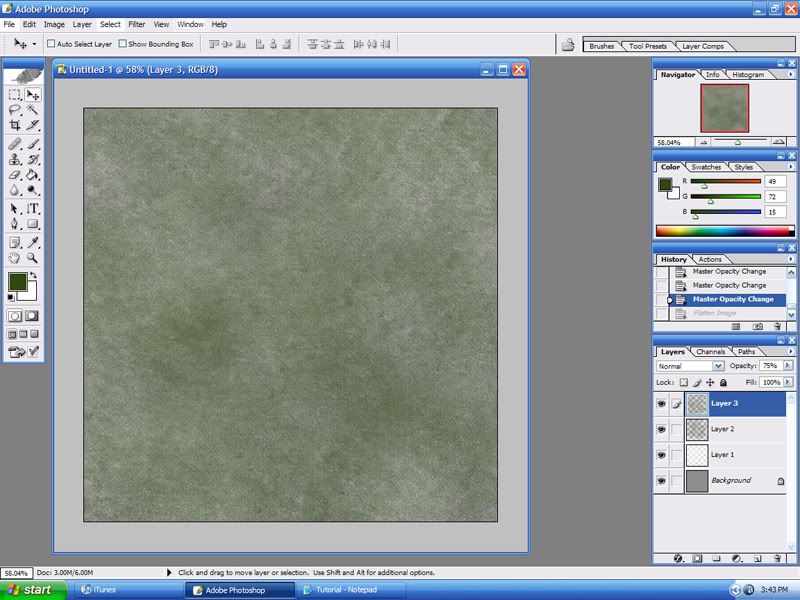
This next part is optional. If you have small, scratch-like brushes, load them up. Create a new layer, and change your color to white. Randomly spread a single brush over a layer. Do this again with different scratch brushes and new layers. For a nice set of scratch brushes, check this out (
download). Again, this will look stupid at first, but adjust the opacity until it is barely noticable, and you're good to go. Depending on the brightness of your texture, this opacity might even get down below 5%. For my three layers, I got 8%, 10%, and 14%. It's okay if you can barely notice these layers, because they will show up in the next step. Save your texture as a .PSD file at this point.

After making sure everything looks just right, flatten your image by clicking Layer > Flatten Image. Now, click Filter > Other > Custom. Make sure that the settings look like the ones in the following screenshot:

If your settings look like this, the filter should sharpen your image. If you want, play with the color / brightness / contrast settings, and then save as your desired file type. I recommend not saving over the .PSD file you just saved, so you can go back and edit the texture in the future, if you need to.
Here is my finished texture. You may save it and use it however you want, as long as you credit Inspire! Media.
